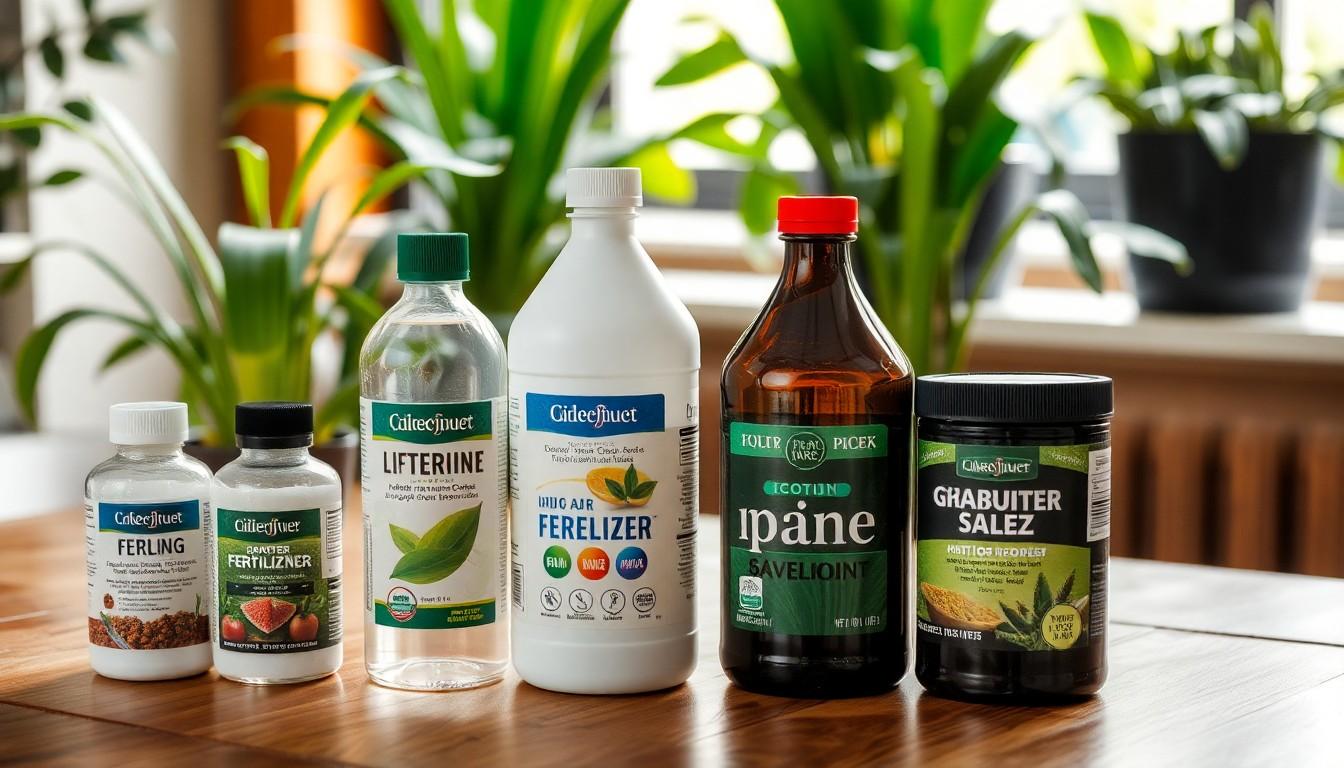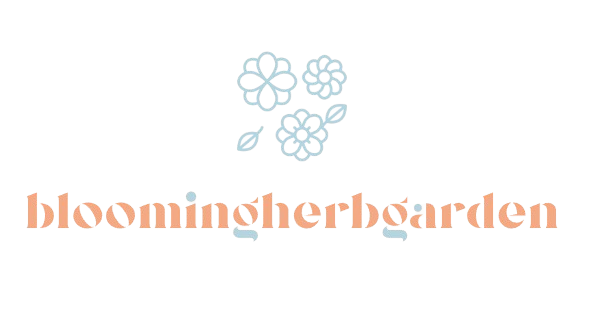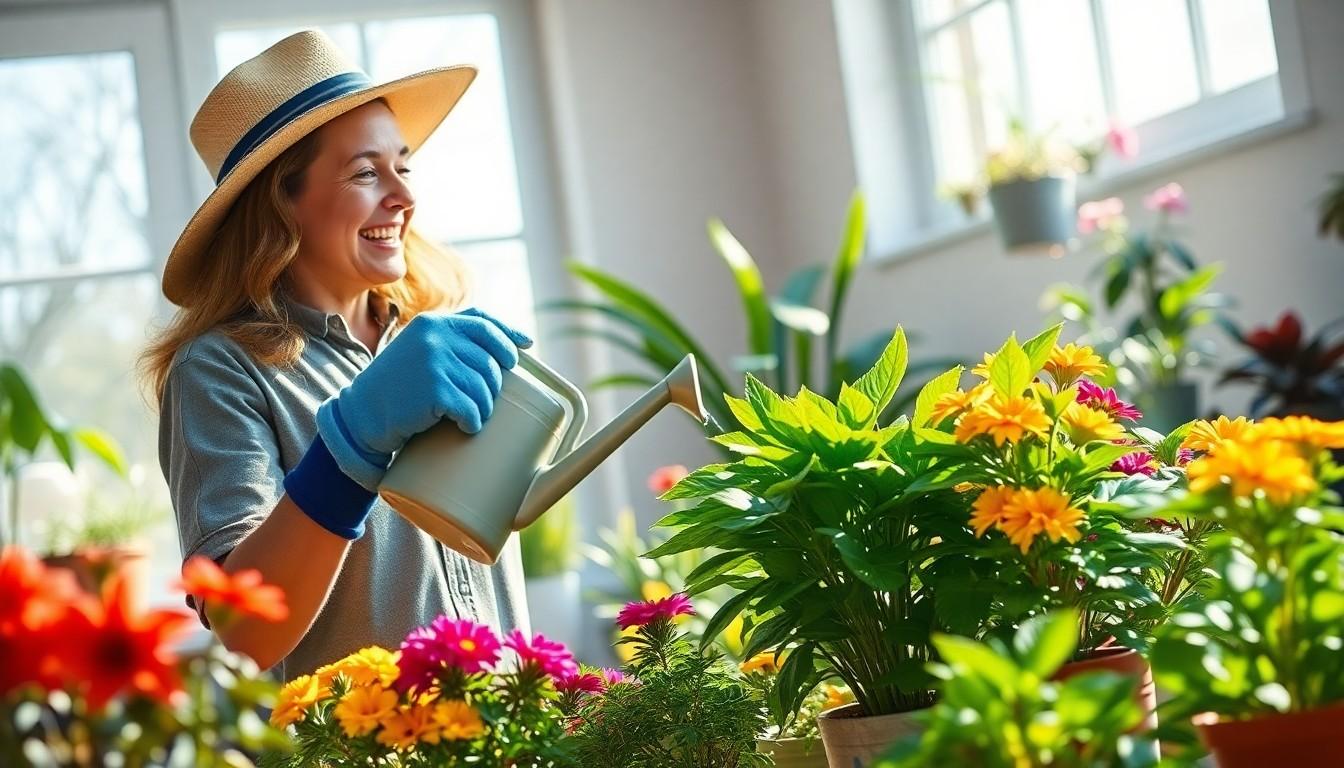Indoor plants can turn any space into a lush paradise, but without the right nutrition, they might just be as sad as a cat in a dog park. Fertilizing these green companions isn’t just a chore; it’s a secret ingredient for thriving foliage and vibrant blooms. Think of it as giving your plants a gourmet meal instead of a sad snack.
Importance Of Fertilizing Indoor Plants
Fertilizing indoor plants significantly enhances their overall health and appearance. Nutrients in fertilizers support various functions, including growth, flowering, and disease resistance. Regularly providing these essential nutrients prevents deficiencies that could stunt growth or reduce vigor.
Plants require nitrogen for robust foliage, phosphorus for root development and flowering, and potassium for overall plant health. An imbalance in nutrient levels can lead to inadequate growth, poor blooming, and other issues. Fertilization acts as a vital component of an indoor plant’s care routine.
Understanding the type of fertilizer and application frequency plays a key role in successful indoor gardening. Liquid fertilizers generally offer immediate nutrient availability, while slow-release options supply nutrients gradually. Each option suits different plant types and growth stages, ensuring optimal nutrition.
Consider seasonal changes when determining fertilization schedules. Spring and summer often require more frequent fertilization as plants actively grow. In contrast, fall and winter demand less fertilization during the dormancy period.
Fertilizers not only promote plant growth but also improve soil structure and microbial activity. Healthy soil contributes to better water retention and airflow, benefiting the root systems.
Maintaining a consistent fertilization routine fosters lush, vibrant indoor spaces. Observing plant responses to fertilization helps gardeners adjust practices accordingly. Ultimately, balanced nutrition enhances not only the aesthetics of indoor plants but also their resilience, ensuring they thrive in home environments.
Types Of Indoor Plant Fertilizers

Understanding the different types of indoor plant fertilizers supports informed choices for nurturing plants. Several options cater to varying needs and preferences.
Liquid Fertilizers
Liquid fertilizers deliver nutrients quickly, making them ideal for immediate plant needs. Ample formulations exist, including balanced options and those high in specific nutrients. Many gardeners choose liquid fertilizers for their water-soluble nature, allowing rapid absorption through leaves or soil. Regular applications, particularly during the growing season, enhance growth and flowering potential. Follow recommended dilution rates to prevent nutrient burn, ensuring plants thrive without damage.
Granular Fertilizers
Granular fertilizers provide a slow-release solution for nutrient delivery. Many options contain balanced ratios of nitrogen, phosphorus, and potassium to sustain healthy plant growth. When applied to the soil, granular varieties gradually dissolve, offering nutrients over an extended period. They suit busy gardeners who prefer less frequent fertilization schedules. Proper application involves spreading evenly across the soil surface and lightly mixing it in without disturbing root systems.
Organic Options
Organic fertilizers offer a natural approach to plant nutrition. Various options include compost, worm castings, and fish emulsion. These alternatives improve soil health while providing essential nutrients. Microbial activity thrives, promoting growth and resilience in indoor plants. Many gardeners appreciate organic products for their sustainability and absence of synthetic chemicals. Applying organic fertilizers requires consideration of timing and frequency, ensuring plants receive balanced nourishment throughout their life cycles.
When To Fertilize Indoor Plants
Timing plays a crucial role in successful fertilization. Understanding when to fertilize ensures indoor plants receive the right nutrition at the right moment.
Seasonal Considerations
Spring marks the active growing season for most indoor plants. Increased sunlight and warmer temperatures drive a plant’s growth, prompting the need for more nutrients. Summer also requires regular fertilization as plants continue to thrive. During fall, growth slows, necessitating reduced fertilization frequency. Winter dormancy represents a time when most indoor plants require minimal or no fertilization. Adjusting the fertilization schedule according to the seasons maximizes plant health.
Growth Stages
Newly planted or young indoor plants benefit from more frequent fertilization as they establish roots. During the vegetative growth stage, increase nutrient supply to support robust leaf development. Flowering stages demand special attention, especially for species requiring high phosphorus levels. As plants mature, the focus shifts to balanced feeding, ensuring they maintain health and vitality. Tailoring fertilization to growth stages recognizes the plants’ specific needs, fostering overall well-being.
How To Apply Fertilizer
Applying fertilizer properly ensures indoor plants get the nutrients they require for optimal growth. Understanding the techniques involved can elevate plant health.
Best Practices
Fertilize during active growth periods like spring and summer. Focus on using balanced fertilizers that provide nitrogen, phosphorus, and potassium. Dilute liquid fertilizers according to package instructions to prevent root burn. Apply fertilizers in the early morning or late afternoon to avoid strong sunlight, which can lead to evaporation and impede absorption. Water thoroughly before and after fertilization to enhance nutrient uptake. Rotating between different types of fertilizers, such as liquid and granular, can also enhance nutrient delivery.
Common Mistakes
Over-fertilization is a frequent error that can damage plants. Ignoring the specific needs of different plant species may lead to nutrient imbalances. Applying fertilizer without watering first can stress roots, causing them to burn. Neglecting to adjust fertilization frequency during seasonal changes can hinder growth. Lastly, not evaluating plant response after fertilizing often leads to missed opportunities for adjustments, preventing optimal health and growth.
Conclusion
Fertilizing indoor plants is a vital step in nurturing their growth and beauty. By understanding the specific nutrient needs and applying the right type of fertilizer at appropriate times, gardeners can create thriving indoor environments. Observing plant responses and adjusting fertilization practices ensures that each plant receives the care it deserves.
With a consistent routine and attention to seasonal changes, indoor plants can flourish, showcasing vibrant foliage and stunning blooms. This balanced approach to plant nutrition not only enhances their aesthetics but also boosts their resilience, allowing them to thrive in any home setting. Embracing these practices will lead to lush greenery and a more vibrant indoor space.

